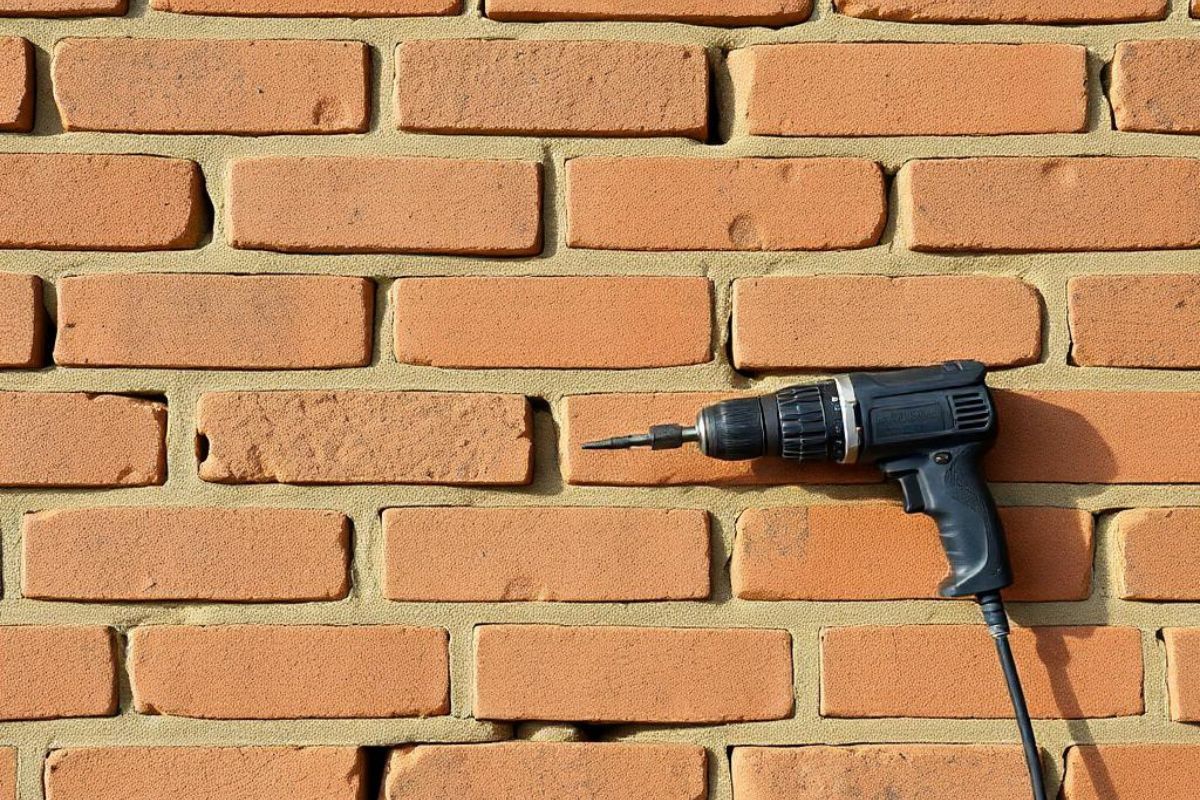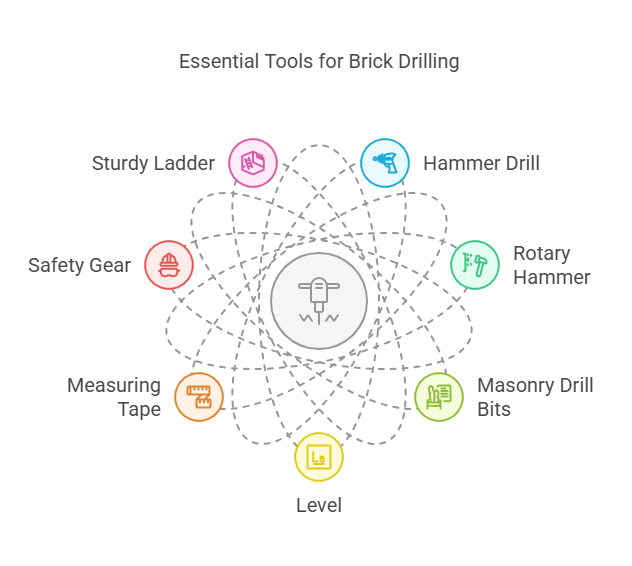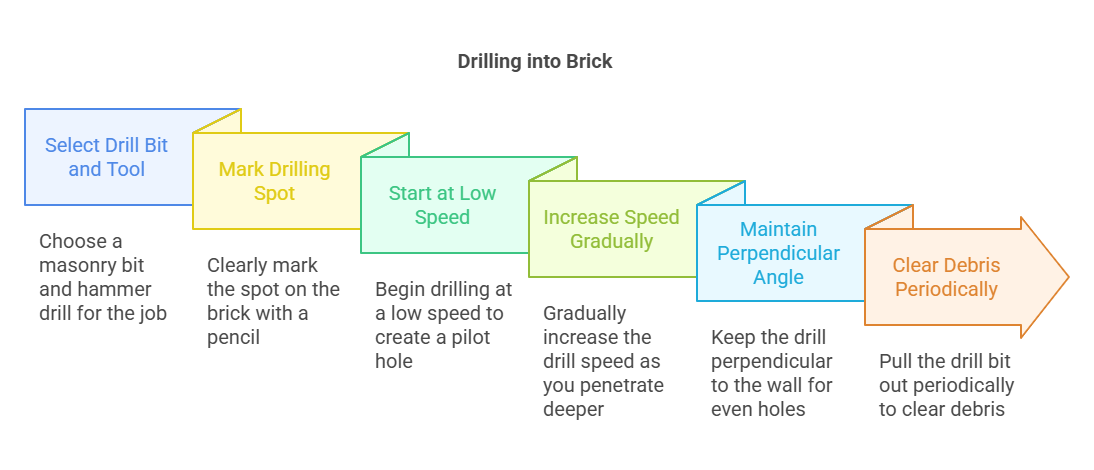How to Drill Into Brick for Projects

To drill into brick for your projects, start by identifying the brick type—fired, soft, or concrete—since this affects your approach. Use a hammer drill with masonry bits for best results. Clear your work area of clutter and guarantee good lighting. Mark your drilling spot accurately, and begin with a slow speed to create a pilot hole. Maintain a perpendicular angle for even holes. Don't forget to wear safety goggles, a dust mask, and ear protection while you work. With these tips in mind, you're on the right track to successful drilling. More details will strengthen your project approach.
- Identify the brick type to choose the appropriate drill bits and techniques, using masonry bits for fired brick and standard bits for soft brick.
- Prepare your work area by clearing clutter, using a drop cloth for debris, and ensuring good lighting for visibility.
- Use a hammer drill with masonry drill bits for effective drilling into hard surfaces, starting with a pilot hole for accuracy.
- Always wear safety gear, including goggles, dust masks, and ear protection, to safeguard against debris and noise during the drilling process.
- Check behind the surface with a stud finder to avoid hitting hidden wires or pipes while drilling into the brick.
Understanding Brick Types
When you're preparing to drill into brick, it's essential to understand the different types of brick you might encounter. Common types include fired brick, which is dense and durable, making it suitable for heavy-duty projects. Soft brick, often used in older constructions, is easier to drill but less resilient. You might also find concrete bricks, which can be tougher than fired bricks.
Each type requires a specific approach; for instance, fired brick may need a masonry bit, while soft brick can use standard bits. Knowing these distinctions helps you choose the right technique and prevents damage to both your tools and the brick. Always assess the material before starting to guarantee a successful drilling experience.
Essential Tools Required
Knowing the type of brick you're dealing with sets the stage for selecting the right tools for your project. To drill into brick effectively, you'll need a few essential items. First, grab a hammer drill or rotary hammer; these tools deliver the power necessary for drilling into tough materials. Next, select masonry drill bits specifically designed for brick, as they have a sharp tip to penetrate hard surfaces.
A level and measuring tape will help guarantee accurate placement of your holes. Don't forget safety gear, including goggles and a dust mask to protect yourself from debris. Finally, a sturdy ladder can assist you in reaching high areas safely. With these tools in hand, you're ready to start your drilling project.

Preparing the Work Area
Before you start drilling, it's important to prepare your work area properly. Clear the space around you of any clutter or obstacles to guarantee you can move freely. Lay down a drop cloth or old sheet to catch dust and debris; this makes cleanup easier. Make sure you have good lighting so you can see your work clearly. If you're drilling indoors, consider using a vacuum to minimize dust spread.
Check for any electrical wires or pipes behind the brick surface; use a stud finder if necessary. Finally, wear safety goggles and a dust mask to protect yourself from flying debris and harmful particles. Taking these steps will help promote a safe and efficient drilling experience.
.jpeg)
Drilling Techniques and Tips
To achieve the best results while drilling into brick, start by selecting the right drill bit and tool for the job. A masonry bit is ideal, as it's specifically designed for hard surfaces. Use a hammer drill for added power, which helps in breaking up the brick more effectively. Before drilling, mark the spot clearly with a pencil for accuracy. Begin at a low speed to create a pilot hole, then gradually increase the speed as you penetrate deeper.

Keep the drill perpendicular to the wall to avoid uneven holes. Periodically pull the bit out to clear debris and prevent overheating. Finally, don't rush; a steady pace guarantees a clean, precise hole without damaging the brick.
Safety Precautions to Follow
Drilling into brick can be straightforward, but safety should always be a priority. First, wear safety goggles to protect your eyes from flying debris. A dust mask is essential, too, as brick dust can irritate your lungs. Use ear protection if you're using loud equipment, like a hammer drill, to prevent hearing damage.
Confirm your workspace is clear of obstacles and well-lit. Double-check that your drill bit is suitable for masonry and in good condition. When drilling, maintain a firm grip on the drill and apply steady pressure, avoiding sudden movements. Finally, keep children and pets away from your work area to prevent accidents. By following these precautions, you'll confirm a safer and more successful drilling experience.
Conclusion
To sum up, drilling into brick can be straightforward with the right tools and techniques. By understanding brick types, preparing your work area, and following safety precautions, you can achieve clean and effective results for your project. Remember to choose the appropriate drill bit and take your time to avoid mistakes. With practice and the right approach, you'll be able to tackle any brick drilling task confidently and efficiently. Happy drilling!









